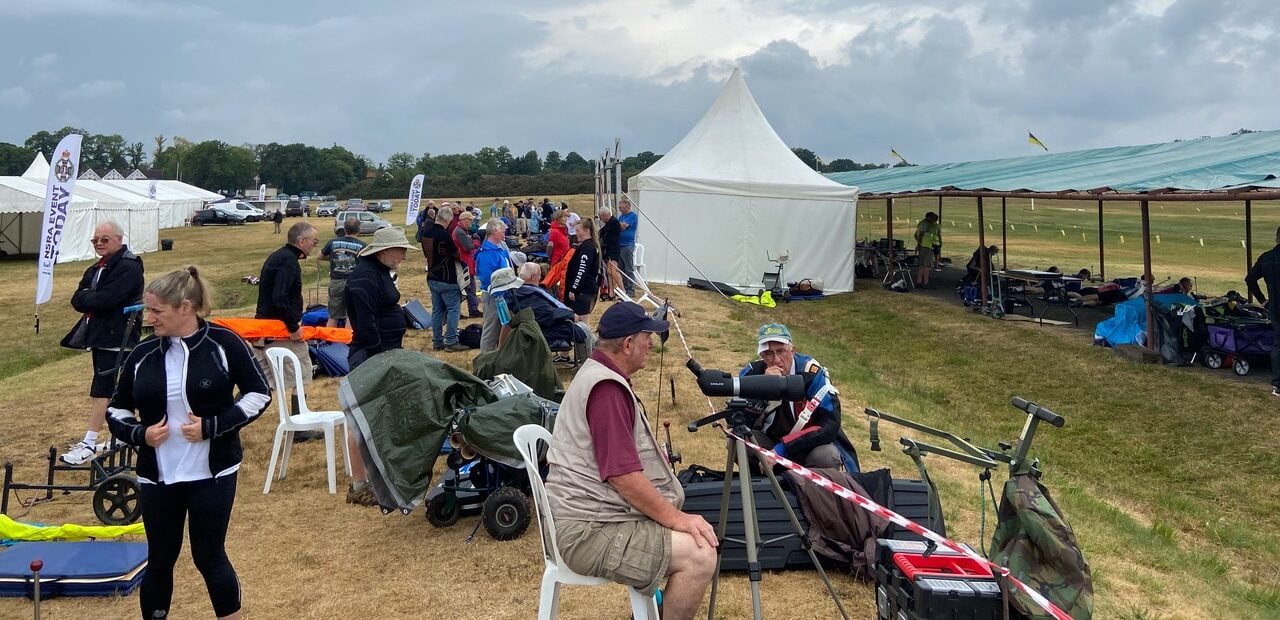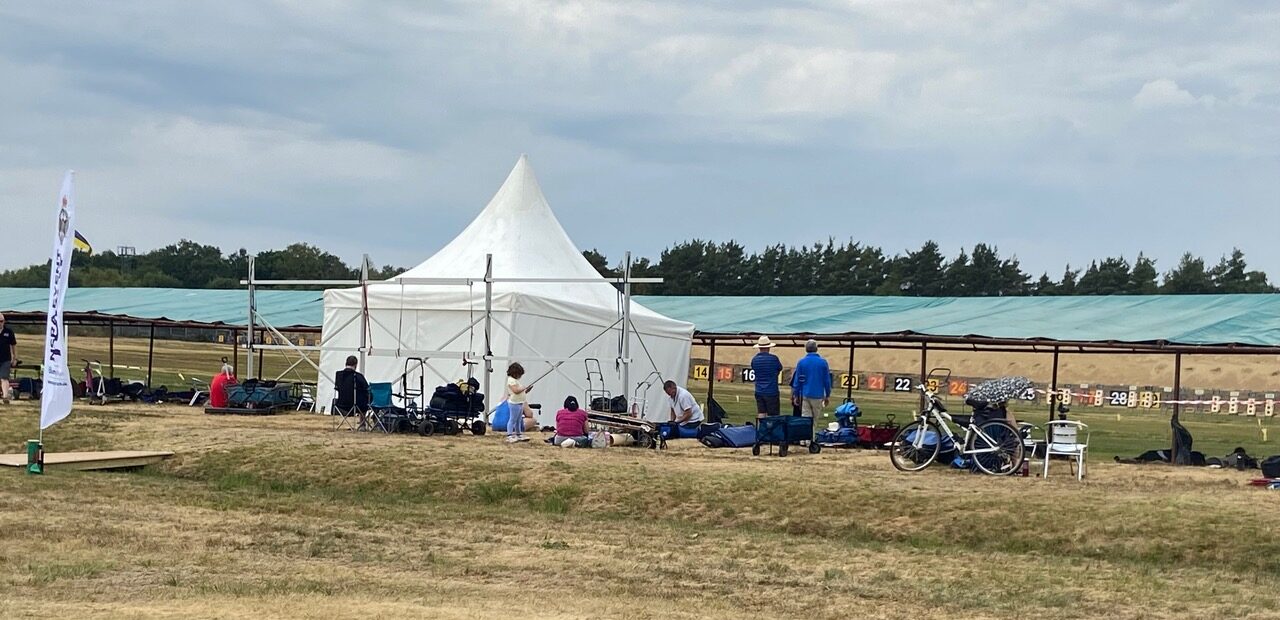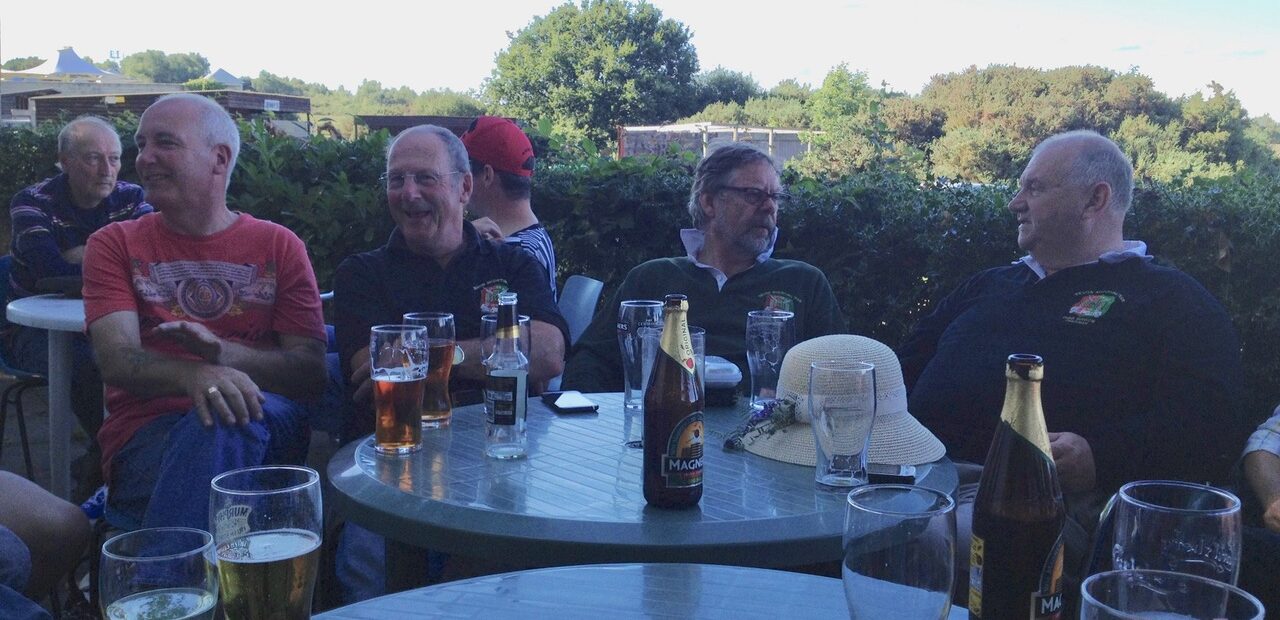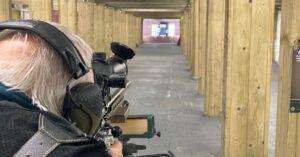For those wanting to try national competition there are the Bisley and Scottish rifle meetings which now also include some benchrest shooting. There is usually a weekend competition and then a series of competitions during the week that form a Grand Aggregate so you have to plan to be away either for the first weekend if only shooting the weekend or Monday to Friday if you want to shoot the week or, of course, both if you want to shoot it all.
The weekend comprises an English Match and a Scottish Match and the Aggregate of both. The weekend has an element of lottery to it as whilst you shoot in classes of people of similar ability you have to choose when to shoot from a series of squads of 3 details of 20 minutes each. The lottery comes because you might have horrendous wind and weather when you shoot your cards but fellow class shooters might enjoy optimal conditions! Many of us shoot the weekend as a practice for the week when everyone in the same class shoots at the same time and so shoot on an equal footing.
The week comprises English Matches (60 shots over 3 cards at 50m), Scottish Matches (60 shots over 3 cards at 100 yards) and Single and Double Dewars which are all separate competitions in their own right but there is also an aggregate for the week.
In addition to the Weekend Aggregate and the Grand Aggregate for the week there are other competitions to enter which can either be shot concurrently with the weekend or the week by doubling up on the stickers or shooting them separately as unsquadded competitions when you are not shooting in your class for the week or weekend. To shoot unsquadded details you need to book a firing point on which to shoot. A sheet showing available firing points is published daily at 8:30am in the main marquee which is also where you register, collect your stickers when you first arrive and can see the results posted on the results boards. This is where the shot cards get scored and where to challenge your score if you think a mistake has been made. The limit to the number of competitions that you enter is how deep your pockets are to afford the entry fees!
Bisley is a self contained, once army camp, with many colonial shooting clubs where one can get a drink in the evening with no need to drive and can get a meal. There is a Sainsburys nearby along with fish & chips in the village and any number of takeaways, pubs and restaurants if you want to go out and about. Accommodation is available from the NRA from camping & caravan pitches through basic rooms for 2 or 4 to share to bed & breakfast type deals in a number of the clubs. If you know an NRA member with a caravan or his own accommodation you might be able to hire that for the week.
Pinhoe and Devon usually have a strong contingent making the annual pilgrimage to Bisley and there is a Devon dinner on one night and a Cornwall BBQ on another night so it is a convivial week amongst friends. We tend to congregate in the City Rifle Club after shooting to drown our sorrows after seeing the scores on the wailing wall of results!
In addition to the above there are inter-county team matches and home country internationals. The Eley final is held on the first weekend as is the Queen Alexandra Cup. At the end of the week you can decide to enter the Earl Roberts British Championship to determine the best shooter of the year. This is shot in heats where the top so many from each heat win through to the next heat which is then shot on Saturday morning. If you get through that you are in the final, shot on Saturday afternoon, the pinnacle of British small-bore shooting. The prize giving for the whole weekend and week takes place after the Earl Roberts final and is a lengthy proceedings with many, many trophies, medals and badges to be won.
If you shoot shotgun there are lots of opportunities to shoot, skeet, down the line, trap or English Sporting if you have the time available on a pay as you go basis.
Turning to the real practicalities once you have entered you get an acknowledgement to show what you have entered and the class in which you are to shoot. Nothing to do then apart from book your holiday dates and accommodation. On arrival at Bisley you need to collect your competitor’s envelope from the Stats tent which is the main marquee on Century range. In that envelope you will get the competition booklet, your stickers to go on your targets and a schedule of your squadded shooting for the week giving you the times, detail numbers and firing point numbers for your shoots on each day and most importantly your competitor number. You collect your targets and backers from the Stats tent. Your competition stickers go at the top of the target above your sighting diagram. You then enter your detail number and firing point numbers twice on the front of the target in the boxes provided. On the backer you write your competitor number top centre and your detail and firing point numbers at the top left.
Bisley is a great challenge. Until you have been you are unlikely to have encountered shooting in as difficult conditions as at Bisley unless you have shot the Scottish or Jersey meetings. Century range is huge and designed for shooting at up to 600 yards with fullbore rifles. We only use 100 yards of it but there are over 200 firing points side by side and the wind has no obstructions to slow it down or shelter you from it. Learning how to shoot in the wind at Budleigh Farm is a help but even that is a well sheltered range in comparison to Bisley!
To shoot in the wind there are three main methods:-
- You sight in on a particular wind and only ever shoot on that wind when the direction and strength are the same as when you sighted in. The risk is you might choose a wind that does not reoccur very often. The wind might change so you have to go back on the sighter and sight in again on a different wind. You have 20 minutes to shoot twenty shots to count plus sighters. This is the best method.
- You learn how to shoot in the wind so that you become skilled in knowing that a given wind direction and strength will push you out into say the 8 ring at 5 o’clock. By aiming off in the opposite direction at the 8 ring on the other side you hope to get a bull. This can be risky but sometimes when running out of time you can use this method if you don’t have time to wait for your wind to come back.
- The last method is called “chasing the wind” as you alter your sights each time you miss the bull to try to get a bull the next time you shoot. Of course the wind may have changed again by the time you have altered your sights and shot and you miss again – hence the term “chasing the wind”.
You don’t just get wind at Bisley. It is held in August at the height of Summer so you can get blazing hot days under extreme sun and if the wind is very light then you get mirage. Mirage is when the air “boils” and the targets appear to be higher than they really are resulting in your fall of shots going high on the target because of course the target has not moved at all, it is just an optical illusion. The trick is to look down the side of your target frame and not to shoot when the air boils but only shoot when the air looks like a river flowing which means that there is a light, almost indiscernible breeze, which is when to shoot.
I hope that this helps and encourages anyone who has not entered a Bisley to try one. Usually once you have been once you will go again and again. It’s a great week of shooting with great crack and quite a few beers and aiming fluid thrown in!



